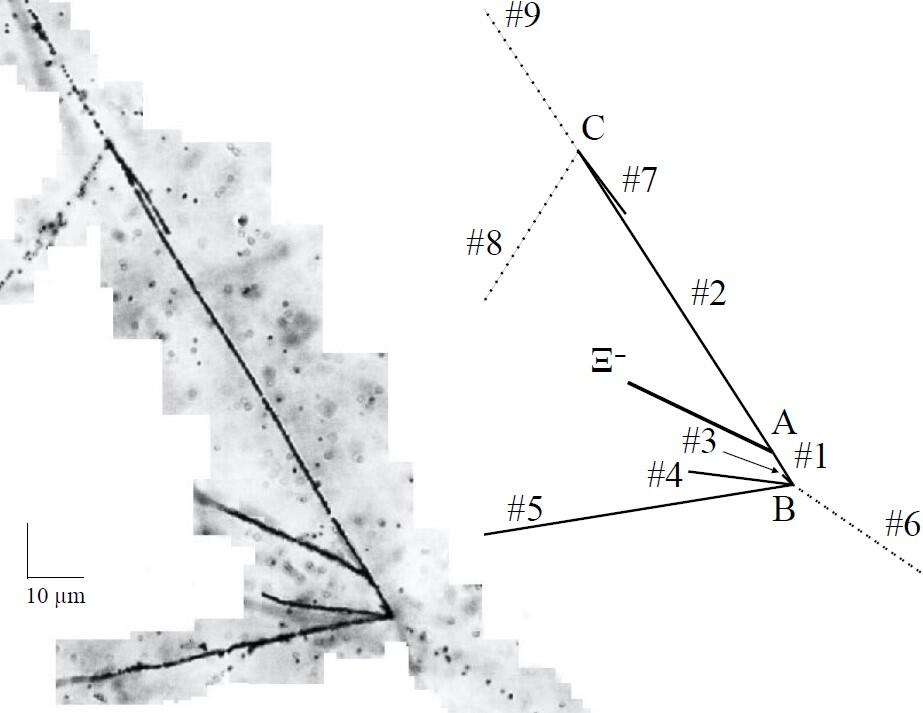A research group comprised of Senior Professor Kazuma Nakazawa of the Faculty of Education and Graduate School of Engineering, Gifu University, postdoctoral researcher Shuhei Hayakawa of the Advanced Science Research Center, Sector of Nuclear Science Research, Japan Atomic Energy Agency (JAEA), Assistant Professor Junya Yoshida of the Graduate School of Science, Tohoku University, and Professor Toshiyuki Takahashi of the Institute of Particle and Nuclear Studies, High Energy Accelerator Research Organization (KEK), have successfully observed the super-nucleus known as the guzai nucleus, which includes two strange quarks called guzai minus particles, as part of a joint experiment involving 26 universities and research institutes in six countries (Japan, Korea, U.S., China, Germany, and Myanmar) using the Japan Proton Accelerator Research Complex (J-PARC) (J-PARC E07 experiment).

(Credit: Japan Atomic Energy Agency)
The existence of the guzai particles inside neutron stars was predicted, but their nature was almost completely unknown because of the difficulty in producing and detecting these particles, which do not exist naturally on Earth.
The group was able to find the guzai nucleus, containing guzai particles, by combining the high strength and purity of the J-PARC accelerator beam with a photographic plate capable of recording particle tracks with high precision. Guzai nuclei occur extremely rarely and only leave traces at the 10 micron scale on photographic plates.
This observation was the result of over 30 years of development in experimental technology. The steps required to achieve the result included the hand fabrication of the test equipment and applying a total of 2.1 tons of photographic emulsion to the photographic plate by hand, and then drying it.
According to detailed analysis, it was the guzai nucleus that was observed during an event where it was absorbed by a nitrogen-14 nucleus on the photographic plate and broke down into two lambda nuclei (a beryllium-10 lambda nucleus and a helium-5 lambda nucleus), the binding energy of which was determined to be 1.27±0.21 MeV.
This research result was labelled the "Ibuki Event," after Mount Ibuki located in Gifu prefecture.
Hayakawa states that, "Going forward, we hope to find many more guzai nuclei by developing a faster and more efficient analytical method of dry plates in an effort to understand the power of guzai particles and the internal structure of neutron stars. In addition to the guzai nucleus, we are continuing to search for other nuclei such as the double-lambda nucleus and the sigma nucleus, so our discovery of new nuclei won't be limited to the guzai nucleus."
Yoshida adds, "We will go on to detect and analyze several examples and types of guzai nuclei in an effort to understand the motion energy of guzai particles and nuclei. This knowledge will lead to an understanding of the between particles comprising nuclei and the phenomena by which guzai particles can occur in neutron stars."
This article has been translated by JST with permission from The Science News Ltd.(https://sci-news.co.jp/). Unauthorized reproduction of the article and photographs is prohibited.




